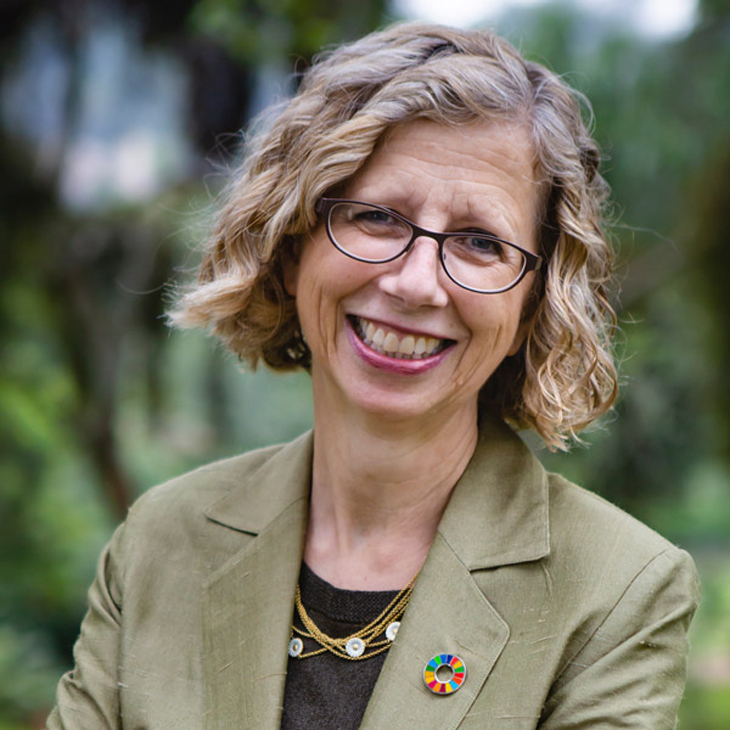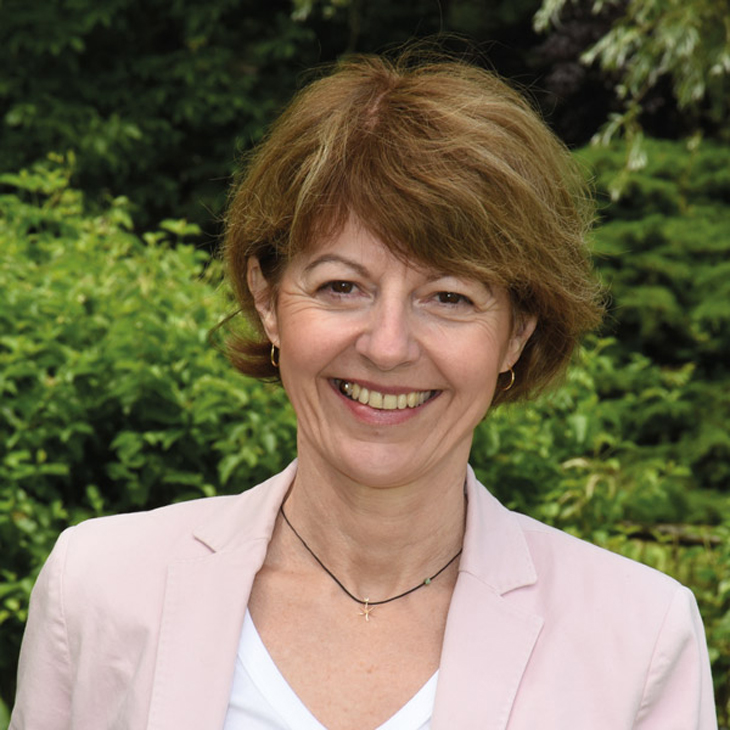Forewords
Convention on Biological Diversity
The second edition of the Local Biodiversity Outlooks (LBO-2) complements the fifth edition of the Global Biodiversity Outlook (GBO-5) with stories from diverse indigenous and local communities all contributing to the objectives of the Convention on Biological Diversity. LBO-2 is published at a critical time when the assessment of the implementation of the 2011-2020 Strategic Plan for Biodiversity, and the negotiation of the post-2020 global biodiversity framework are on-going.
It demonstrates the contributions of indigenous peoples and local communities on each target of the 2011-2020 Strategic Plan for Biodiversity. It gives voice to those people living directly in, and as part of nature. As such, it provides a valuable source to ground-truth what is going on at the local level at the interface of conservation and sustainable use.
LBO-2 reminds us that the emerging global biodiversity framework is the opportunity to reinforce the connection between nature and our health. It highlights the importance of traditional knowledge, to protect Nature’s essential contributions to people, which includes, among other benefits, a healthy and sustainable environment, traditional medicines, as well as food security.
At a time when GBO-5 reports that most of the targets of the Strategy Plan for Biodiversity 2011-2020 may not be met, it is important to seek out the optimism that is embodied by those who live closely with Nature. LBO-2 embodies an optimism that the destruction of Nature and the dramatic loss of biodiversity and cultural diversity can be successfully reversed, by embracing the values, and building on the collective and local actions of the World’s indigenous peoples and local communities.
As partners in the implementation of the Convention, indigenous peoples and local communities can play a fundamental role in addressing solutions in the post-2020 global biodiversity framework. The many stories in LBO encourage me to call on Parties and governments, and the international community, to unleash the power of the collective and local actions of indigenous peoples and local communities, to assist humanity to achieve our vision of living in harmony with Nature, by 2050.

Elizabeth Maruma Mrema
Executive Secretary
Convention on Biological Diversity
International Indigenous Forum on Biodiversity
Since 1996, indigenous peoples and local communities (IPLC) have actively participated in the creation and presentation of proposals in CBD processes through efforts coordinated under the International Indigenous Forum on Biodiversity (IIFB). By means of these efforts, they have transformed the Working Group on Article 8(j) into a key platform promoting consultation and active dialogue between the Parties to the CBD and the IIFB. The new post-2020 global biodiversity framework should be an opportunity for the Parties to reaffirm their commitment to respect and recognise the rights, knowledge and practices of indigenous peoples and local communities, as well as create the conditions for their full and effective participation in the work of the Convention.
Today, the world faces a new challenge with the COVID-19 pandemic, which is exposing the causes of impacts on biodiversity. It is critical to recognise indigenous territories and promote indigenous systems of use, management, and conservation of biodiversity as sustainable models that allow the development of Ütz K’aslemal or good living of humanity.
In order for the 2050 vision to be successful, the contribution of all sectors must be taken into account. In our case, it must be in line with indigenous worldviews that place emphasis on the intrinsic relationship between human beings, Mother Nature and the universe, and the essential link that exists between nature and culture. The period beyond 2020 must be based on approaches and frameworks that place rights, gender, and intergenerational equality as key components for progress.
This publication is a key instrument that shows how the actions and contributions of IPLC support the achievement of the objectives of the CBD, which inspire and invite us to walk together, unite our thoughts and learn from the key lessons of the processes that will allow us to leave a pathway, thus ensuring the future of nature and humanity.

Ramiro Batzin
Maya Kaqchikel
Executive Director, SOTZ’IL
IIFB Global Coordinator
UN Environment Programme
To succeed, the post-2020 global biodiversity framework needs ambitious targets, along with solutions and means of delivering them. As Local Biodiversity Outlooks 2 shows, indigenous people and local communities (IPLCs for short) have long been deploying the kind of solutions the world needs to adopt.
IPLCs are vital custodians of nature. Over a quarter of global land area is owned, managed, used or occupied by IPLCs. This includes over one third of the area that is formally protected. Up to 80 per cent of forest biodiversity lies within indigenous people’s territories.
They are successful custodians too. Even though biodiversity is in decline across the globe, it is declining less rapidly in areas managed by IPLCs. IPLC territories are islands of diversity in a sea of degraded ecosystems.
Despite their track record of success, the territories of IPLCs are under threat: from agriculture, infrastructure and more. And, when representatives of IPLCs try to protect their lands and waters, they can pay for their efforts with their lives. IPLCs, and especially the women within them, need secure land tenure and access to their natural resources.
This report recognizes the knowledge, innovations, practices, institutions and values of IPLCs in nature conservation, restoration and sustainable use. By drawing on perspectives and experiences of IPLCs during implementation of the Strategic Plan for Biodiversity 2011-2020, this report informs the development and implementation of the post-2020 global biodiversity framework.
I would like to thank all those involved in the preparation of this publication, and especially the contributions from indigenous peoples. I look forward to helping indigenous and local ways of knowing, being and doing to support the global processes that lead us towards the 2050 Vision of Living in Harmony with Nature.

Inger Andersen
Under-Secretary-General of the United Nations and
Executive Director of the UN Environment Programme
Centres of Distinction on Indigenous and Local Knowledge
The Convention on Biological Diversity’s recognition of the integral linkages between traditional knowledge and biodiversity has promoted global understanding about the contributions of indigenous peoples and local communities to sustaining life on Earth. By welcoming the publication of the 2nd edition of Local Biodiversity Outlooks (LBO-2) as a complement to CBD’s 5th Global Biodiversity Outlook (GBO-5), showcasing IPLCs’ collective contributions during the UN Decade on Biodiversity, the Parties to the CBD have signalled a strategic partnership between governments and peoples for the conservation, sustainable use and benefit-sharing from the use of biodiversity.
LBO-2 makes a critical assessment about the outcomes of this strategic partnership from the perspective of indigenous peoples and local communities. Through written contributions to LBO-2 and LBO Online, communities express their lived experiences and collective stories about confronting globally unsustainable economic, political and social systems leading to the rapid loss of biological and cultural diversity. Importantly, LBO-2 also celebrates myriad signs of hope embodied in community resilience, problem-solving and culture-based practices of living in harmony with nature.
Through community-based monitoring and information systems, IPLCs are generating data to inform local governance and self-determination, as well as contributing evidence in support of broader reporting on the implementation of global commitments. These serve as true measures about progress on the ground towards meeting globally agreed targets on biodiversity, climate action and sustainable development. Therefore, LBO-2 is a timely record of IPLC transitions towards revitalising human-nature relationships.
The global network of Centres of Distinction on Indigenous and Local Knowledge, as institutions of cultural reflection, inter-generational transmission of knowledge and inter-community exchange and learning, are proud to be collaborators with many other partners, in publishing LBO-2. We welcome the proliferation of such initiatives among IPLCs in all global regions, countries and territories around the world, as part of our continuous renewal of cultures and natures.

Joji Carino
Coordinator
Centres of Distinction on Indigenous and Local Knowledge
Intergovernmental Platform on Biodiversity and Ecosystem Services
The Intergovernmental Platform on Biodiversity and Ecosystem Services (IPBES) is pleased to welcome the second edition of the Local Biodiversity Outlooks (LBO). This second LBO demonstrates and describes the many diverse ways that Indigenous peoples and local communities (IPLC) are working for the conservation and sustainable use of biodiversity, and how these combined actions across large areas of the planet make a significant contribution to global goals.
Since its inception, IPBES has recognised the important contributions of indigenous and local knowledge to biodiversity conservation and sustainable use of nature and identified indigenous peoples and local communities as crucial actors in understanding, monitoring, managing and restoring biodiversity. The operating principles of IPBES adopted in 2012 in Panama include the recognition and respect of the contribution of indigenous and local knowledge to the conservation and sustainable use of biodiversity and ecosystems. In 2017, the Plenary of IPBES approved, at its fifth session, an ambitious approach to recognising and working with indigenous and local knowledge in IPBES. Within this approach, IPBES has developed a series of participatory activities that have enhanced work with indigenous and local knowledge in dynamic and mutually beneficial ways.
This approach was successfully implemented in the production of the IPBES Global Assessment of Biodiversity and Ecosystem Services which was approved in 2019. The Global Assessment, concluded, among other key messages, that Nature is generally declining less rapidly in indigenous peoples’ land than in other lands, but is nevertheless declining, as is the knowledge to manage it.
The wealth of knowledge, case studies and pathways for change presented in this second LBO will now form an important resource for the authors of the three ongoing IPBES assessments, on sustainable use of wild species, diverse values of nature, and invasive alien species, as well as two new assessments on the nexus of biodiversity, food, water, health and climate change, and transformative change. The team behind the second LBO, and all who contributed their knowledge, are to be congratulated on bringing together this very valuable resource.

Anne Larigauderie
Executive Secretary of the Intergovernmental Platform on Biodiversity and Ecosystem Services
Forest Peoples Programme
The Forest Peoples Programme is proud to be involved in the Local Biodiversity Outlooks initiative, a collaboration between a wide range of actors which seeks to record, document, share and highlight the contributions of indigenous peoples and local communities to the conservation and sustainable use of biodiversity. We welcome this second edition of the Local Biodiversity Outlooks report. Its launch in this year—2020—is an important contribution to the on-going discussions on a post-2020 Global Biodiversity Framework and beyond.
The Local Biodiversity Outlooks report serves as a powerful companion to the Global Biodiversity Outlook report in its review of achievements secured during the decade of the UN Strategic Plan for Biodiversity (2011–2020). It is clear from the evidence presented in the report how central indigenous peoples and local communities, and the upholding of their rights, have been in contributing to all of the Aichi targets.
Looking ahead there is a genuine opportunity for governments from every region of the world to enter into partnership with IPLCs to support their sustainable visions, and to achieve the new biodiversity targets that will be agreed. As demonstrated in this report, grounded partnerships towards achieving biodiversity and nature stewardship goals are essential and contribute also to both the Sustainable Development Goals and climate change targets. In fact, it is only through partnership with IPLCs that any of these targets can be achieved.
We look forward to further collaboration with the co-publishers of this important report.

James Whitehead
Director
Forest Peoples Programme


